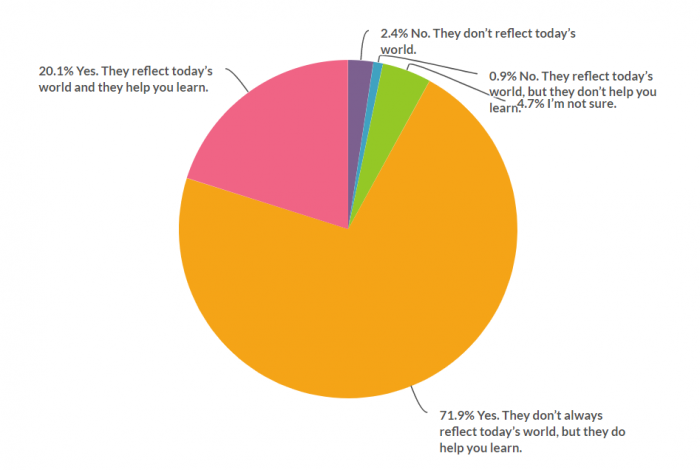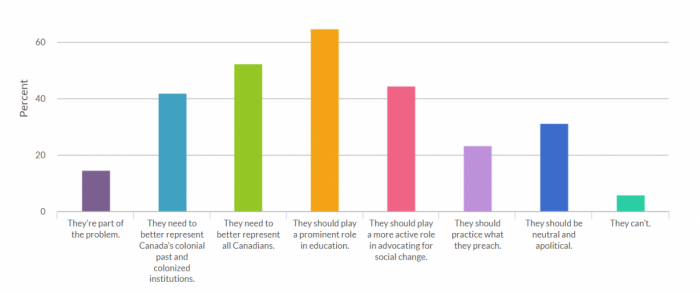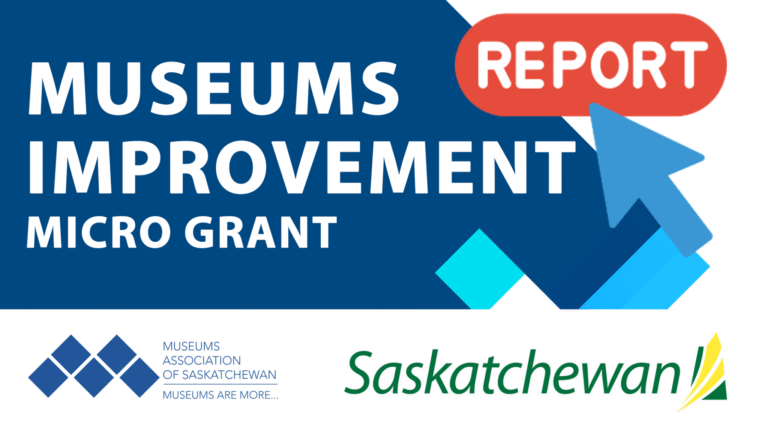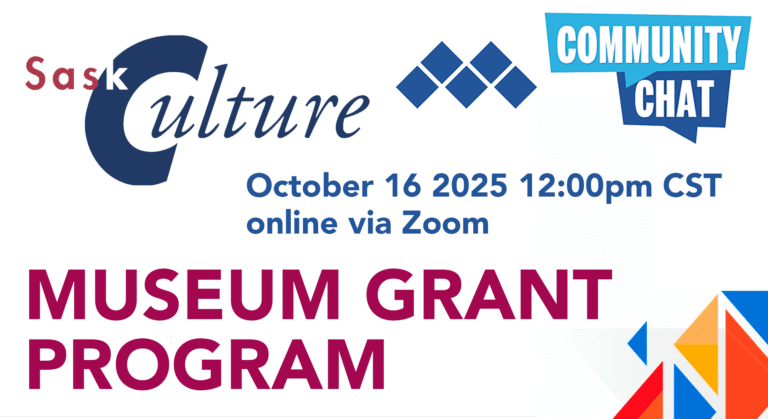
The MAS office will be closed for Christmas Holidays December 24th to January 4th.
Usual office hours will resume on January 5th, 2026

Caroline Loewen, Project Lead, Alberta Museums Association
What do Canadians see as the value of museums for them, their communities, and for
Canada? Reconsidering Museums, a three-year national project, sets out to answer this question. Through a rearticulation of the value of museums and a rebrand of the sector, this project aims to support museums with the tools and language necessary to better connect with and serve their communities, deepening their relationship, and therefore their relevance, to the Canadian public.
Launched in 2020, Reconsidering Museums is a national project undertaken in partnership with a consortium of provincial and territorial museums associations and the Canadian Museums Association, led by the Alberta Museums Association. The first phase of the project was to listen to Canadians. In fall of 2020, the Museums for Me public engagement campaign asked Canadians from all regions and with diverse backgrounds and interests, what do museums mean to you? Responses to this question were collected through an online survey, public opinion polling, and virtual dialogue sessions. The campaign reached over half a million Canadians and recorded the opinions of over 3000 Canadians from across the country.
The findings of the engagement campaign are gathered in the What We Heard report. Here are some key highlights:
The Role of Museums
Survey respondents said museums play many roles in people’s lives and the life of their communities. Some roles that were almost universally recognized are museums as places to learn and be inspired (97%), to preserve and care for art and objects (95%), to help visitors and tourists explore a region or place (94%), and to help people understand other cultures and communities (93%).1
Our survey also revealed that there are many ways museums inspire people, including as places that spark curiosity, provoke wonder, and promote creativity and a “love of learning,” cited by 92% of respondents. Museums are similarly seen as educational institutions that are great for children (88%), places that develop and sustain specific interests (87%), and places that inspire personal development and “well-roundedness” (82%). Respondents also recognized that museums improve the quality of life in a community (84%), are good for mental health and provide restful and calm places (81%), and give people a sense of belonging and membership in a community (77%).2

In addition to affirming the varied roles of the museum in Canadian society, the data revealed three major themes.
Access
Access means many things. It can refer to the physical and financial accessibility of the museum, but it also means that source communities have access to collections that are meaningful to them. It means that information and knowledge is shared in a way that is understandable, relevant, and engaging. An accessible museum is one that is inclusive as a place where people see themselves reflected in exhibits, programming, and collections.
Canadian museums are doing this well. Almost all survey respondents (94%) said museums make them feel welcome and provide what they need for their visits, while only 2% said they did not. 89% agreed that museums are a safe space.3
But there is work to be done. Many people indicated that they want museums to be more representative of all Canadians, to tell more relevant stories, and to work with the cultural groups to whom those stories belong.4

Authority
Respondents indicated that they trust museums. 80% of panel respondents consider museums as a credible source of information. Yet, while almost all survey respondents (92%) said museums can help them learn about the world around them, only one in five (20%) said this is because they reflect today’s world.5
At a time when confidence in public institutions is increasingly tenuous, museums continue to hold the trust of Canadians. That trust is a valuable asset, and we heard that, in order to maintain it, museums need to continue to tell the truth about our shared history.

Activism
Museum workers know that museums are not neutral, and it seems that museum-goers and the public generally agree, although not everyone.
When asked about current social issues, the top three issues that positively impacted how people see the role and value of museums were inclusion and accessibility (68%), technological and digital innovation (68%), and Indigenous reconciliation (67%), followed closely by racial injustice, socio-economic inequalities, and gender inequality.6
When asked how museums can address these issues, education was on top, followed by better representation, and advocating for social change. A small minority (15%) thought that museums are part of the problem. Only 6% thought that museums could not address societal issues.

The question museums face is about how they address these issues. The data presents some competing priorities, specifically generational disagreement about the role of the museum here. We found that younger respondents, aged 18 – 34, were more likely to think that museums should actively advocate for social change, while older (55+) respondents were more likely to think that museums should be neutral and apolitical. The challenge for museums going forward will be to bridge the gap between these competing expectations.
For the full results of the engagement, read the What We Heard report.
To put the findings from this engagement into perspective, we also looked at how the Canadian public’s views about museums have changed over time. In 1974, the first comprehensive study of the behaviour and attitudes of museum-goers and non-goers in Canada was published as The Museum and the Canadian Public. Using this groundbreaking study as a baseline, our study compares the findings of our research and engagement with historical trends, and offers insight into the future of museums in Canada.
To learn more about how views on museums have changed over time, read the report produced by researcher Dr. Victoria Dickenson for the Reconsidering Museums project, Trust and Value: The Role of Museums in Canada in the Twenty-First Century.
Conclusion
Museums remain highly valued by Canadians, both as places to learn and be inspired and as places that help Canadians understand themselves and others. People have placed a lot of trust in Canada’s museums, but they want them to become more inclusive and representative of an increasingly diverse country, to contribute to reconciliation with Indigenous peoples, and to become agents of social change.7
Next Phase
The current work of the Reconsidering Museums project is focused on distilling the findings of the research and engagement campaign into a brand narrative that museums can use to engage the public. The final product will be a new visual identity, compelling messaging, an advocacy and communications toolkit, and an interactive website for museums across Canada. Six Alberta museums will pilot the preliminary toolkit throughout the first half of 2022. These pilot sites will test how the tools support their work and how the messaging resonates with their audiences. This is an iterative process that will allow us to revise the toolkit and messaging in response to feedback from the pilot sites, the broader museum community, and the public.
Through a rearticulation of the value of museums and a rebrand of the sector, we hope that museums will come away with the tools and language necessary to continue to do museum work in ways that better connect with and serve the public.
References
1 Hill+Knowlton Strategies, Museums For Me: Engaging Canadians on the Future of Museums, What We Heard Report (Alberta Museums Association, June 2021), page 11.
2 What We Heard Report, page 12.
3 What We Heard Report, page 10.
4 What We Heard Report, page 3. 5 What We Heard Report, page 13. 6 What We Heard Report, page 13. 7 What We Heard Report, page 4.
AMA Website:
https://museums.ab.ca/what-we-do/reconsidering-museums.aspx
Blog Post:
https://museums-cei.blogspot.com/2021/12/reconsidering-museums-what-we- heard.html
Engagement Campaign:
Museums For Me: https://www.museumsforme.ca/ Pilot Sites:
Atlas Coal Mine National Historic Site: https://atlascoalmine.ab.ca/
Blackfoot Crossing Historical Park: https://www.blackfootcrossing.ca/index.html
Fort McMurray Heritage Village and Shipyard: https://fortmcmurrayheritage.com/
Galt Museum and Archives: https://www.galtmuseum.com/
Millet and District Museum and Archives: https://www.milletmuseum.ca/
and the Royal Alberta Museum: https://royalalbertamuseum.ca/
Reports:
Trust and Value: The Role of Museums in Canada in the Twenty-First Century
What We Heard
https://museums.ab.ca/media/163967/what_we_heard_report_wappendix.pdf
For any additional communications needs, please contact Caroline Loewen, Project Lead, at [email protected].
The Museum Association of Saskatchewan gratefully acknowledges the financial support of the Government of Canada through the Canada Cultural Investment Fund for the Reconsidering Museums project.


Usual office hours will resume on January 5th, 2026

Just a reminder that the Final Report for the Museum Improvement Micro Grant for Community Museums is due December 5th! Your final report will require you to provide a brief

Thursday October 16, 202512:00pm CSTOnline via Zoom: https://us02web.zoom.us/j/86760471705?pwd=XjoSlWAP0TJZVYrprylmLqujOkVrk2.1 No registration required. The Museum Grant Program (MGP) provides operational funding to help foster strong, vibrant, community-based Saskatchewan museums that are valued